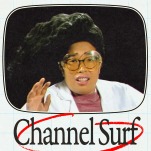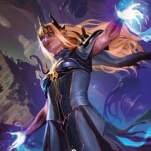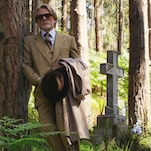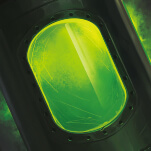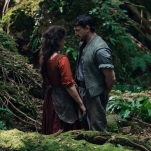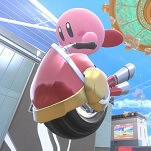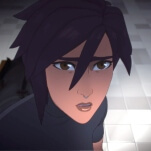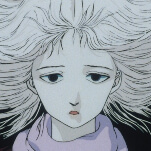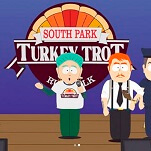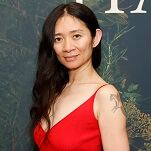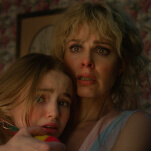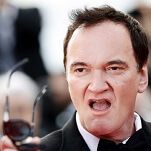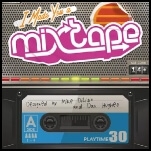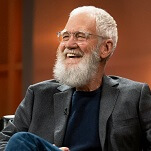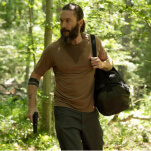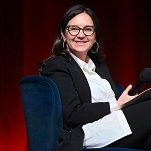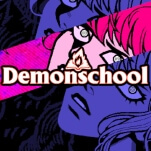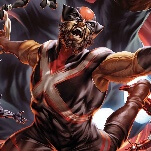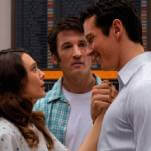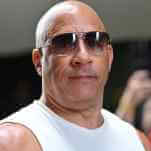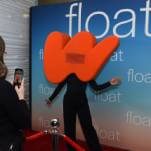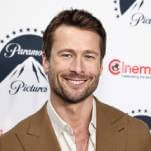The New Cult Canon: Gerry
Two guys get lost in the desert.
That's it. And if you're looking for plot
developments, this is all you get: They get even more lost. Gus Van Sant's
minimalist landscape film Gerry is like moviemaking detox, for an audience weaned
on a steady diet of slick, hard-charging narrative films, and for a
once-revered independent director who spent too much time supplying them. After
a string of Hollywood (or Indiewood, really) movies that ended with the regrettable Finding Forrester
in 2000, Van Sant had what appeared to be an artistic reawakening that's
carried him through the better part of a decade, with films like Elephant, Last Days, and Paranoid Park. And it all started in
2002 when he dropped Gerry on the Sundance Film Festival, a place that
purports to celebrate independent cinema, but which market forces have turned
into a kind of shadow Hollywood. Needless to say, reception was mixed.
Gerry haters usually take the same tack: In essence,
there's no there there. In their view, 100 minutes of Matt Damon and Casey
Affleck wandering around, with long takes, minimal dialogue, and scant
psychology, does not constitute a proper movie. And I'll confess that the film
is something of a Rorschach blot, in that what you get out of it relies to a
large extent on what you put into it. Van Sant and company do have something on
their minds, but Gerry avoids the spelled-out themes that are plugged into most
movies and which often take away their mystery. What they've done instead is
draw viewers into an unusually receptive and contemplative headspace, given
them the trace outlines of a man-vs.-nature theme, and provided an
exceptionally beautiful place to do some thinking.
Set to the simple "mystic minimalism" of Arvo Pärt's
"Spiegel Im Spiegel"—a piece that briefly became, as editor Keith Phipps
pointed out, the "All Star" of '00 classical music cues—the opening shot
of Gerry
lays out the terms right away. Without so much as a title card, Van Sant
follows at a mesmerizing distance as Damon and Affleck's car drifts along an
arid expanse. (The film's diverse topography is courtesy of Argentina, the
Bonneville Salt Flats, and Death Valley National Park, with the latter featured
most prominently.) Trusting Pärt's music and Harris Savides' awe-inspiring
widescreen cinematography to work their magic, Van Sant wants to make it clear
that this ain't Good Will Hunting; he effectively eases the audience into the ice
bath, and asks them to recalibrate their expectations for how a movie should be
shot and paced. On the international scene, what he's doing isn't that radical.
Directors of the "master shot" school are a dime a dozen overseas—but in America,
from an established filmmaker like Van Sant, it's virtually unheard of. The
opening needs to cast a spell, and to that end, I think it succeeds swimmingly:
Damon and Affleck—neither given names other
than the credited "Gerry," which is also used as a noun, verb, and adjective,
as a synonym for "fuck-up"—pull up to a hiking trail in an old luxury car
caked in dirt. The vehicle is just the first indication that they aren't
seasoned at this. One can imagine the car as a hand-me-down from an upper-middle-class
family, maybe as a graduation or birthday gift. Their hiking boots are clean
and full-treaded, and outside of two layers of shirts and a couple of soda
cans, they're heading off onto the trail with nothing—no food, no water,
no map, no compass. Perhaps they didn't need to be prepared: After all, they're
going on this hike to "that thing," and when they reach that thing, they'll
turn back and go home, content that they had some interaction with nature. (One
of my favorite exchanges in this often very funny movie: Affleck starts
complaining, "God, it is so…," and Damon finishes his sentence with "Yeah, it's
really nice, the fresh air.")
Where they make their initial mistake is telling.
As a family walks past them on the trail, they decide to go in another
direction, under the logic that everything is going to lead to the same place.
This is a mentality that I think many of us in the modern world share; we're
used to having safeguards in place, no matter where we go. Affleck and Damon
make the critical error of treating nature like some sort of amusement park, as
if there were invisible rails penning them into the ride, ensuring that they're
deposited safely back where they started. It's inconceivable that there's no
net to catch them—or "dirt mattress," for that matter—because like
many other Americans, they don't believe that it's possible to get lost anywhere anymore. There has to be
a road, a gas station, or an outpost just over that next hill, because that's
how the spread of civilization is supposed to work.
Heavily inspired by the films of Hungarian
director Béla Tarr, particularly his magisterial seven-and-a-half hour opus Sátántangó, Gerry does remarkable things
with landscapes, soundscapes, and screen space—which I'll get to
later—but one of the striking things is how funny it is, especially in the
early going. Little throwaway bits of improvisation (Van Sant, Damon, and
Affleck are all credited screenwriters, suggesting that the dialogue was largely
done on the spot) keep things buoyant, like an exchange where Damon describes
an episode of Wheel Of Fortune in which a contestant had only a single letter
remaining in a puzzle ("BARRE_ING DOWN THE ROAD") and thought a "y" was
missing. It's a funny anecdote, and subtly sketches these two characters as
more savvy about pop culture than the world outside that bubble.


